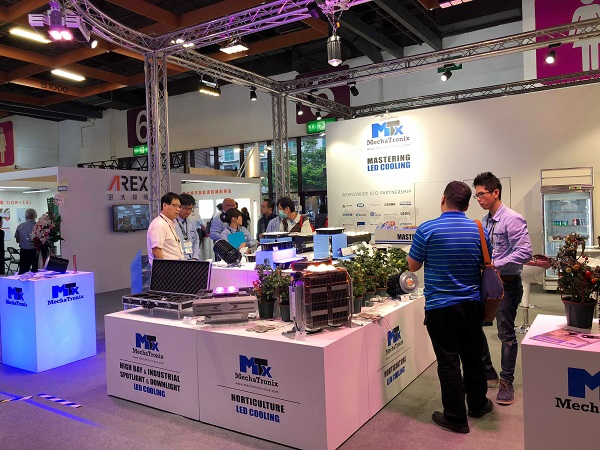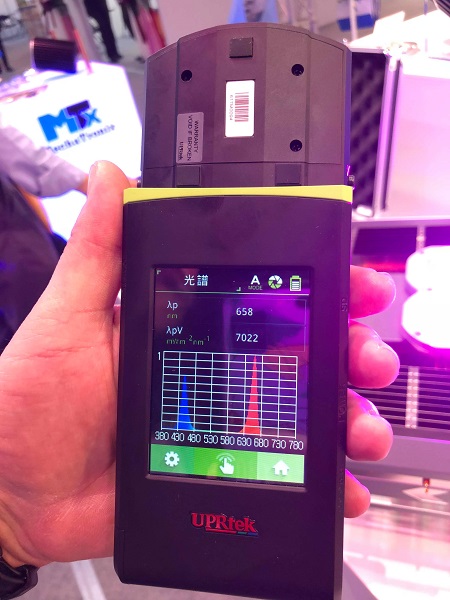 |
|
MechaTronix at TILS 2018 (Image: LEDinside) |
After four days from April 25-28, Taiwan International Lighting Show (TILS 2018) ended on a high note in Taipei. The show gathered 114 exhibitors with 420 booths and attracted buyers from 12 countries. Centering around the theme ‘Smart Design, Radiant Life,’ it showcased a wide range of advanced general- and smart-lighting technologies and applications.
As a regular exhibitor at TILS 2018, LED cooling system provider MechaTronix this time share with LEDinside a few trends it spotted in the horticultural lighting market.
Having attended a few overseas horticulture conferences, Koen Vangorp, CEO of MechaTronix, saw the efficacy of LED grow lights has significantly enhanced as the LED technology became more and more mature.
The preference of LED grow light manufacturers has also slowly shifted. Instead of using broadband LED light sources that simulate sunlight, they nowadays have a tendency to choose narrowband LEDs with higher efficacy, he added. The light spectrum of those narrowband LEDs is tuned to peak in the wavelength ranges of visible red and blue light, two colors plants need the most for photosynthesis.
The top 10 grow light companies all order LEDs from a major multinational company that specializes in the production of narrowband LED light sources, Vangorp learnt from a source familiar with the horticultural lighting segment.

|
|
The light spectrum of those narrowband LEDs is tuned to peak in the wavelength ranges of visible red and blue light, two colors plants need the most for photosynthesis. (Image: LEDinside) |
Another trend Vangorp saw is that more advanced lighting technologies have been introduced to the horticultural lighting market. There exists a big gap between developments of general lighting and horticultural lighting, he stated. The lighting technologies introduced in the market are not new, though.
On one hand, optics that helps improve light distribution is added to LED grow lights to even the light output for sensitive plants such ornamental plants. On the other hand, more LED grow lights are equipped with advanced control systems. Lighting for humans is smartening up, and so should lighting for plants.
By integrated with sensors and other intelligent devices, LED grow lights are able to collect data, such as humidity, temperature, and the density of Oxygen and CO2, to improve environmental monitoring and increase the efficiency of plant growth.
In addition, with smart lighting control systems, the light output of LED grow lights can be controlled for plants’ needs at different times of a day. Using an intelligent control system to slowly but stably increase the light output when waking up plants is an example.













